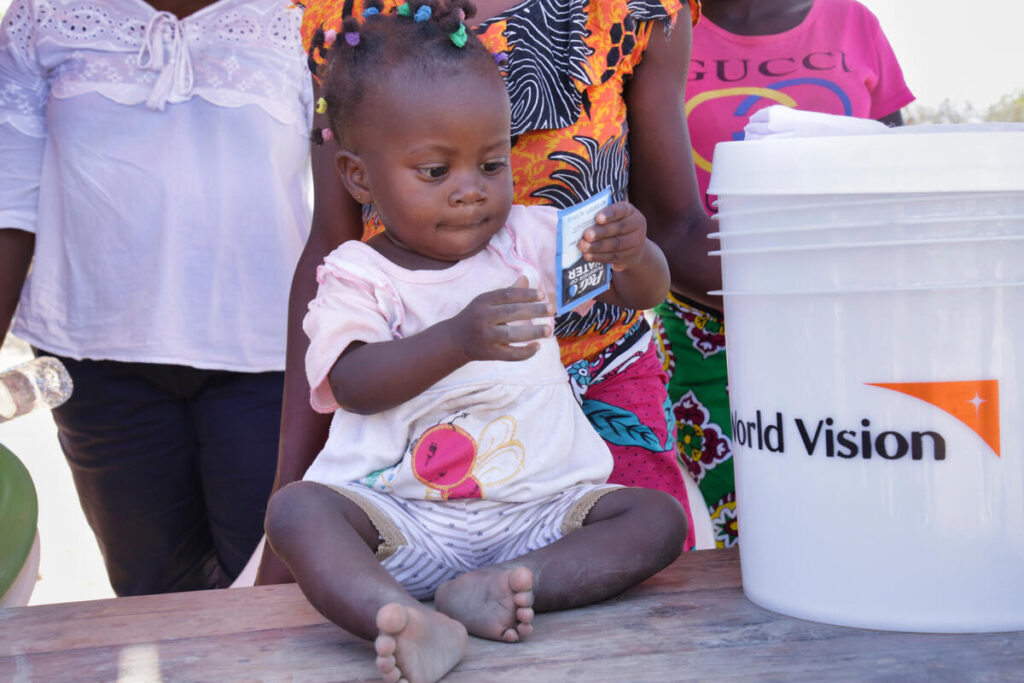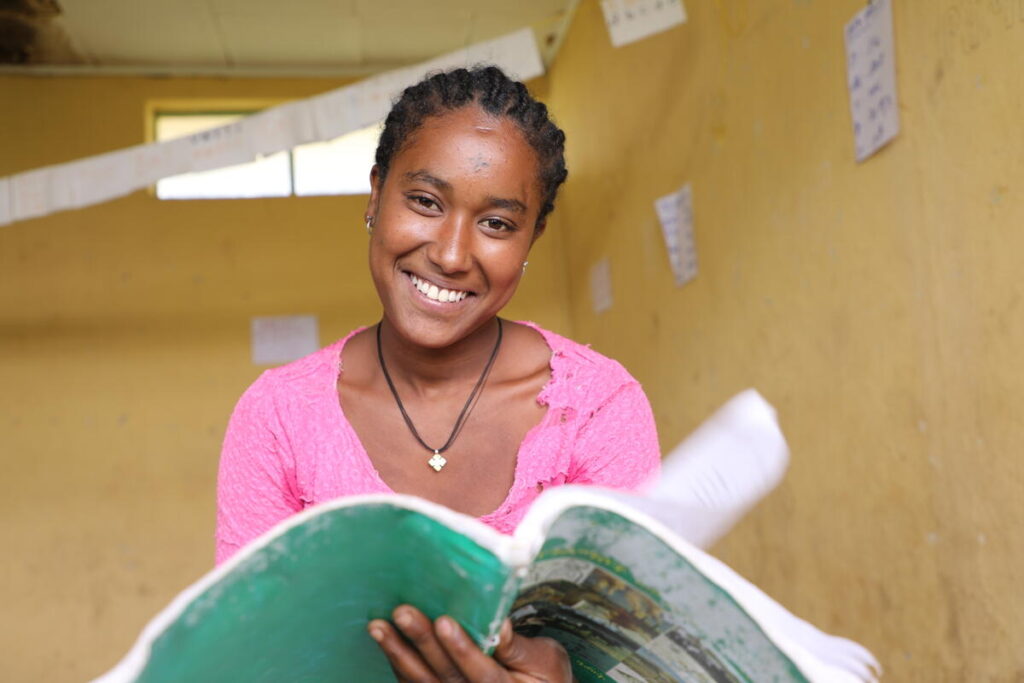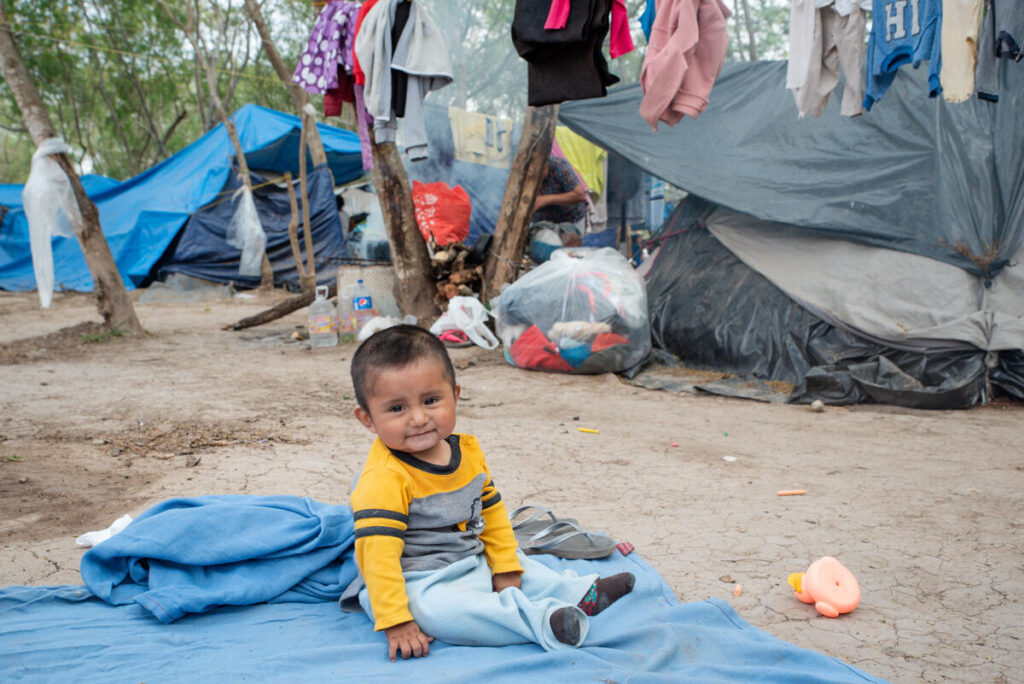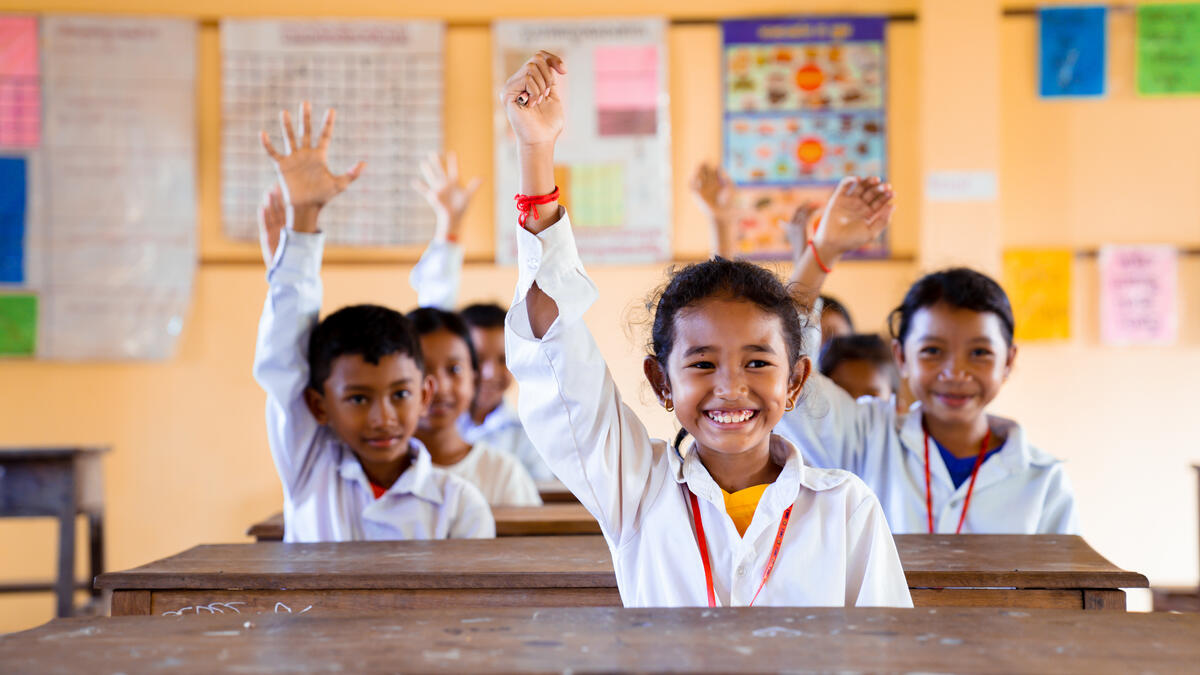Estimated read time: Seven minutes
We’re a few months into a new year and we are so thankful for this fresh start! The past couple of years have been difficult (to say the least) but thankfully, it seems the light at the end of the tunnel is drawing near. And though it hasn’t been easy, many of us have found purpose and meaning in lending a hand to both our local and global neighbors. As every inch of our world has struggled with the fear and unknown that comes with a pandemic, our eyes have been opened to injustice and other crises that affect vulnerable children and their families. And this new awareness is clear in our community: World Vision advocates took thousands more actions than in a usual year, making sure Congress heard their voices via emails, calls, and even tweets about the issues facing children and families in extreme poverty around the world.
Advocacy has made an incredible impact, but we can’t erase the fact that COVID-19 has either delayed or massively set back progress on humanitarian goals worldwide. In addition to the economic instability that many around the world are struggling with, children in extreme poverty and/or fragile settings also now face increases in child labor, child marriage, and other forms of violence. At the same time, they have more obstacles to getting back into the classroom, if their schools are even able to reopen yet. And already-struggling health systems in these places may have been put under even more strain by the pandemic.
It’s discouraging, but it doesn’t mean there’s no hope. We CAN do something about it.
There are a few priorities we have as we dive into a new year of advocating for children: scroll down to find a preview of our issues to advocate for in 2022. Learn more and then stay tuned throughout the year — we’ll have plenty of opportunities to speak out for God’s justice for those in need!
Foreign assistance
U.S. foreign assistance accounts for less than 1 percent of the federal budget — yet this small amount enables the United States to work through trusted partners, including faith-based organizations such as World Vision, to implement programs that bring hope, opportunity, and improved well-being for children and families in the world’s toughest places.
This assistance encompasses global health, child protection, food assistance, gender equality, education, economic development, water, sanitation & hygiene, and humanitarian response—all while partnering with communities and countries to build self-reliance. With funding allocated annually by Congress, the U.S. Agency for International Development (USAID) provides grants to trusted implementing partners like World Vision. These grants complement existing development activities and increase our overall impact—putting our collective goals of eliminating extreme poverty and achieving holistic child wellbeing within reach.
Take action: Protect foreign assistance!
International Disaster Assistance
Approximately 235 million people around the world need life-saving humanitarian assistance, which is the highest figure in decades.
Included within U.S. foreign assistance is the International Disaster Assistance (IDA) account, which provides critical humanitarian assistance in response to natural disasters, conflicts, and other emergencies around the world. This funding provides children and families in need with emergency food, water, shelter, health care, psychosocial support, and complementary activities that support relief, recovery, and resilience. In short, it helps countries prepare for, respond to, and recover from crises, providing for the immediate needs of the most vulnerable and supplying resources to build resilience for future emergencies!
One in four of the world’s children lives in a conflict or disaster zone. These children deserve care and protection. And in the wake of COVID-19’s economic and development impacts, the challenge of providing assistance to children in these fragile contexts has only increased.
Take action: Speak up for this critical piece of funding during humanitarian emergencies!

Child Labor
Child labor takes a devastating toll on the physical, mental, and social development of the 73 million children around the world engaged in dirty, dangerous, and degrading jobs. These children deserve an education, freedom, and the overall life God intended for them.
Around the world, 152 million children are involved in child labor, including 73 million in hazardous forms of child labor in industries such as agriculture, mining, fishing, commercial sexual exploitation, and factories. Of these, 4.3 million are in forced labor. The U.S. International Labor Affairs Bureau (ILAB) has worked with nonprofits and communities since 1995 to protect and provide services to nearly 2 million children in or at risk of being in hazardous child labor.
The International Labor Affairs Bureau has a proven track record of success, working with partners to lift more than 1.94 million children out of child labor since 1995. Continuing these programs means that more children will be in school, children will be healthier, communities will be stronger, and as these children become adults, these communities will thrive!
Take action: Protect funding to protect children from forced labor!
Maternal and child health
No matter where you live, being a new mom can be stressful! But for families in the developing world, malnutrition, pneumonia, and malaria make it even scarier. Where children are born shouldn’t determine whether they survive. God wants fullness of life for every child — and all moms deserve the right medical care to safely deliver and nurture their babies. Your voice can help make that a reality.
Will you ask Congress to protect funding for vital maternal and child health programs? Every March, members of Congress have a chance to co-sign a letter affirming the importance of funding for mother and child health through organizations like World Vision.
Use our simple, pre-filled form to contact your legislators and ask them to sign this compassionate letter before time runs out. Together, we can pave the way for moms and babies to not just survive but thrive!
Take action: Tell your members of Congress to support maternal and child health programs!

Child marriage
Each year, 12 million girls are married before the age of 18. That’s 22 girls every minute whose childhood, dreams, and education are cut short. All children are made in God’s image and are worthy of dignity, respect, and opportunities to thrive. It’s time to protect and empower girls everywhere.
Unless we accelerate our efforts to end child marriage, 150 million more girls will be married by 2030. This number will likely be much higher due to the secondary impacts of COVID-19. Child marriage is a human rights abuse that keeps girls from living into their God-given potential.
God calls us to loose the chains of injustice (see Isaiah 58:6) — let’s do so by speaking out against child marriage, praying for those affected, and standing up for policies and laws that give children the chance to choose their own futures.
Take action: Help end child marriage!
Central America
Thousands continue to flock to the U.S. Southern Border. We routinely see news stories of mass arrivals and more caravans leaving Central American countries and headed North. Many of these news stories cite the prevalence of violence throughout this region as a key factor. While that is true, more specifically, violence against women and children drives the desperation that families feel to give their children a better life.
World Vision Advocacy continues to engage Congress and the Biden Administration regarding foreign assistance and foreign policy in Central America. One of the goals of this advocacy is to continue to build a long-term, bipartisan commitment to continue addressing these root causes of migration. To this end, World Vision has now endorsed a new piece of legislation, the Central America Women and Children Protection Act!
This act will focus on addressing the protection needs of women and children and serve as a catalyst in improving conditions on the ground, creating more economic opportunity, educational attainment, and the uplifting of communities as a whole.

Hunger and Malnutrition
One in three people around the world did not have access to enough food last year, and The World Food Program estimates that the number of people on the brink of famine is now 41 million people, up from 34 million last year.
One of the most significant humanitarian emergencies of our generation is severe food insecurity and malnutrition. World Vision is deeply concerned about the shocking increase of people affected by this in the past year – driven by a deadly mix of conflict, climate change and the socioeconomic impacts of COVID-19.
We believe famine is preventable and that we can equip and empower families to improve their ability to grow and purchase food. Together, let’s advocate for the Global Malnutrition Prevention and Treatment Act of 2021 (H.R. 4693) and support its introduction in the Senate to prevent and treat malnutrition globally by targeting resources and nutrition interventions to support the most vulnerable populations.
Take action: Together we can end global malnutrition and food insecurity!
We’ll be coming to you throughout the year with more opportunities to add your voice to thousands of others in support of these issues. Thank you in advance for your continued willingness to make a stand for children!
Set reminders for yourself to act on these issues to advocate for in 2022, or join our weekly newsletter list below to hear about the latest advocacy needs as they happen:
Young girl raising her hand in a classroom in the Tma Pouk Area Program, Cambodia. World Vision programming in the area is building libraries and organizing “reading camps” to encourage literacy and excitement of learning among children. (©2021 Dara Chhim/World Vision)


